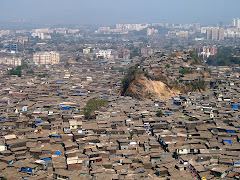The Ozone Layer Protection:
Fifteen to thirty miles above the Earth lies the stratosphere, a broad band of gases and one of these gases is ozone. It's only a small part of the stratosphere but very important because it prevents too many of the sun's ultra violet rays from reaching us. Too many ultra violet rays can give us skin cancer and destroy plankton, the important microscopic life in the sea. In the 1980s it was discovered that 'holes' were appearing in the ozone layer above the Antarctic and Arctic. CFCs, chlorofluorocarbons, gases used in the manufacture of aerosols and fridges, are believed to be responsible for destroying the ozone layer.
Ideas to Help
1. Don't buy aerosols containing CFCs. Actually; it's not a good idea to buy any aerosols. Even 'ozone friendly' aerosols may contain harmful chemicals and spray cans are difficult to dispose of - they cannot be recycled. Pump-action sprays are a much better alternative.
2. A lot of packaging e.g. fast-food cartons are polystyrene 'blown' with CFCs. Try to avoid items packed with this polystyrene.
3. If you know of anyone getting rid of an old fridge, tell them that the CFCs can be drained out and recycled - contact the local council and they will dispose of the fridge safely. New fridges can be bought with less CFCs in them.
Certain gases in the atmosphere, mainly carbon dioxide, methane and CFCs, act like the glass in a greenhouse, allowing sunlight through to heat the Earth's surface but trapping some of the heat as it radiates back into space. Without this the Earth would be frozen and lifeless. However, owing to Man's activities,'greenhouse gases' are building up in the atmosphere, causing a greater amount of heat to be reflected back to Earth. The result is an increase in average world temperatures and in the future this could lead to the flooding of cities world wide and more hurricanes etc.
Ideas to Help
1. Don't waste electricity. Electricity is produced by burning coal, oil and gas and this action gives off carbon dioxide.
2. Car fumes produce carbon dioxide and nitrogen oxide - so try to cut down on car journeys if possible. Use a bike or walk - it's good exercise for you too!
3. Recycle as much of your waste as you can. Methane, the most effective 'greenhouse gas', is released into the air as the rubbish in landfill sites rots.Endangered Habitats and their Wild lifeWild habitats all over the world are fast disappearing. Forests are being cut down, rivers and seas polluted, heath lands built on, hedgerows pulled up, ponds filled in - the destruction seems endless. As the habitats decrease, so do their communities of animals and plants. Habitat destruction is one of the main reasons why many species face extinction. Other reasons include the hunting of animals and collection of plants.There are now more than 5, 000 species of animal and about 25,000 species of plants threatened with extinction. During the last 200 years more than 200 species of mammals and birds have become extinct i.e. disappeared from the earth forever. It is possible that we are losing one species of animal or plant every day!
Ideas to Help
1. In many countries souvenirs made from rare wildlife are available - never buy shells, coral or things made from elephant ivory, rhino horn or cat skin etc.
2. Remember that Indian habitats and wildlife are under threat too. The destruction of wood land, pollution of rivers and ponds, the use of pesticides and herbicides have all contributed to the reduction in the amount of wildlife in Britain. Many animals and plants are endangered e.g. red squirrels, otters, barn owls, golden eagles, natter jack toads, many species of butterflies and dragonflies, orchids - to name just a few. If you have a garden at home, you could transform it into a mini nature reserve for wildlife. The same could be done in your school grounds. Here are just a few ideas to create a wildlife garden: -
· Make a pond. Even A small pond will attract frogs and toads etc.. Birds and foxes may use it for drinking.
· Make a wildflower meadow. Wildflower plants and seeds may be bought from garden suppliers and, if planted correctly, a colorful meadow will result, attracting birds, butterflies and other insects.
· Provide logs and stones and allow a few autumn leaves to remain lying around. These provide shelter for mini beasts and perhaps small mammals such as shrews and mice. An over-neat garden will not be attractive to wildlife.
· Feed the birds during winter and put up nest boxes for robins and blue tits etc. to use in spring.
· If your garden is big enough, you could plant a small wood. Always grow native trees such as oak, ash or birch - these attract more insects than foreign trees.
· Hedgehogs are useful to have in the garden as they eat slugs. Encourage them to stay by providing them with tinned cat or dog meat, water and a safe place to hibernate in winter, such as a pile of logs, stuffed with hay and leaves.
· Avoid using chemical sprays in the garden - some of these can be poisonous to wildlife. It's best to let the birds eat the cabbage-munching caterpillars, the hedgehogs and toads deal with the lettuce-loving slugs and the ladybirds dine on the rose-ravaging greenfly!


